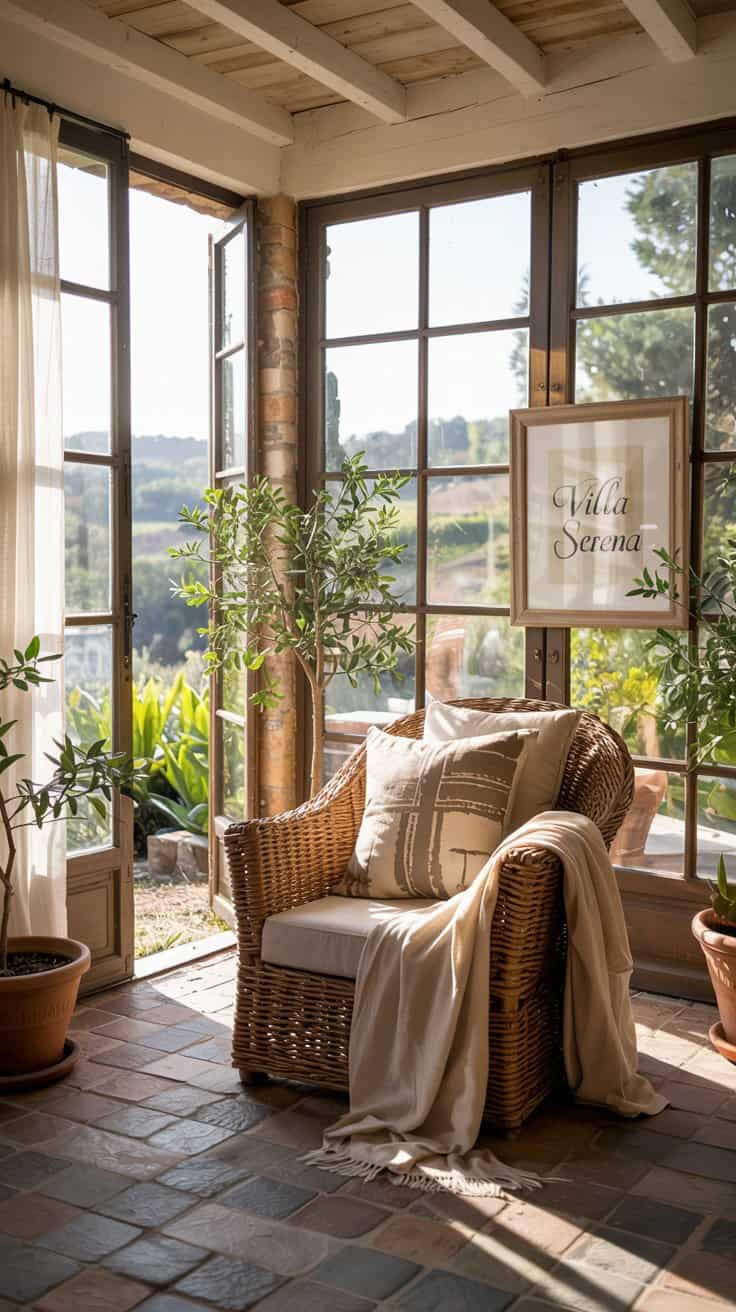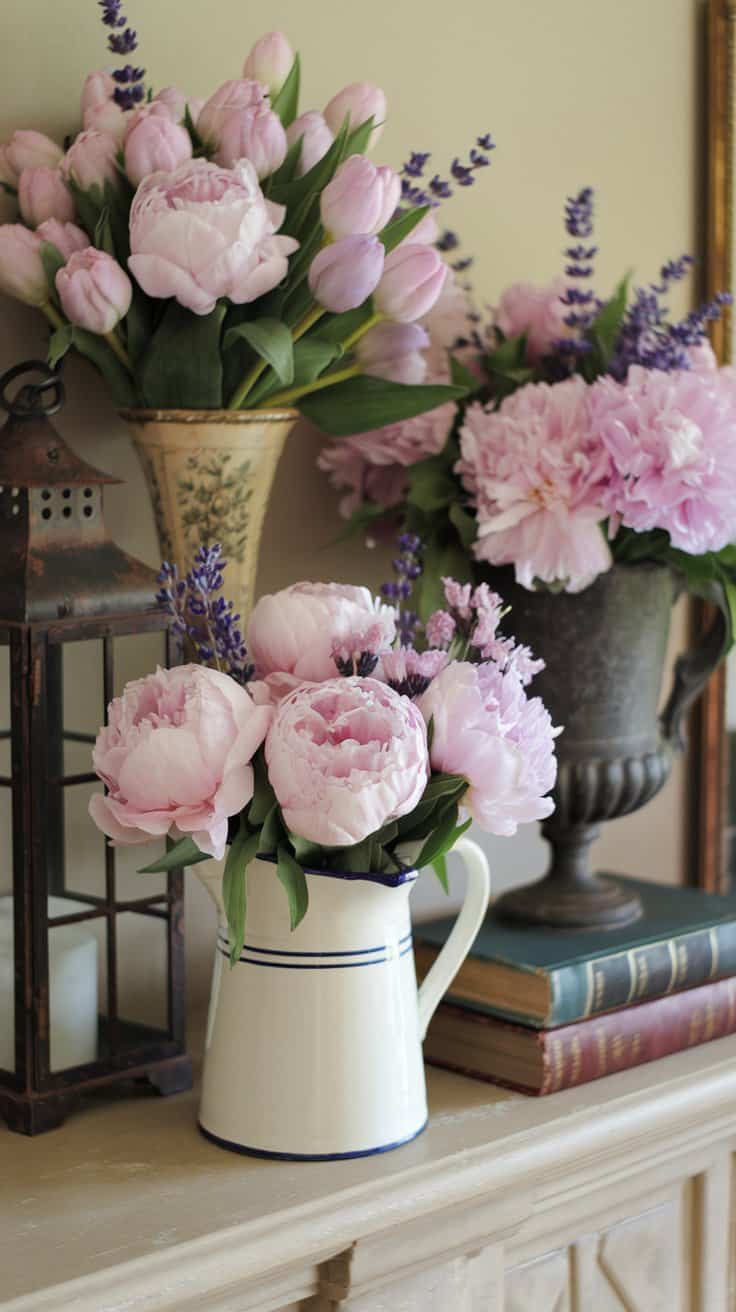Transform your sunroom greenhouse into a thriving indoor oasis with floor-to-ceiling windows, built-in planter boxes, and automated ventilation systems.
A sunroom greenhouse is the perfect combination of luxury and functionality, allowing you to cultivate plants while enjoying a bright, relaxing environment year-round. Whether you want to grow herbs, tropical plants, or flowers, or create a sustainable indoor garden, choosing the right design elements and functional features is key to a successful sunroom greenhouse.
From temperature-controlled flooring to rainwater harvesting, these sunroom greenhouse ideas will help you build a lush and efficient indoor garden that thrives in all seasons.
Key takeaways:
- Maximize natural light with floor-to-ceiling windows and skylights.
- Use automated ventilation and rainwater systems for an eco-friendly approach.
- Incorporate a potting bench and built-in planter boxes for seamless gardening.
- Ensure air circulation and temperature control with fans and specialized flooring.
- Create a cozy seating area to enjoy the greenhouse ambiance year-round.
10 Best Sunroom Greenhouse Ideas
1. Install Floor-to-Ceiling Windows

Floor-to-ceiling windows are essential for a sunroom greenhouse, providing optimal sunlight exposure and creating a seamless connection to the outdoors. These large windows enhance plant growth and give the room a bright and open feel.
For additional control, consider double-glazed or UV-filtered glass to prevent overheating and protect delicate plants. If your sunroom faces direct sunlight for extended periods, install tinted glass panels to filter harsh rays and prevent sunburn on sensitive plants.
Tips: Add motorized blinds or sheer curtains to filter light during peak hours while maintaining airflow. Consider adjustable louvers to direct sunlight to specific areas based on your plants’ needs.
2. Incorporate Built-In Planter Boxes

Built-in planter boxes provide a structured and organized way to grow plants indoors while optimizing space. These boxes can be customized to fit any sunroom layout, allowing you to grow vegetables, herbs, flowers, or succulents in a dedicated space.
Planter boxes can be built from wood, metal, or composite materials, depending on the overall design aesthetic of your sunroom. Tiered planter boxes can help maximize vertical space and allow for easier access to a variety of plants.
Tips: Use self-watering planters or integrate an irrigation system for low-maintenance care. Consider lining the inside with plastic sheeting to prevent water damage to wood materials.
3. Use Clear Polycarbonate Roofing

Instead of traditional glass, clear polycarbonate roofing is a durable, lightweight, and energy-efficient choice for a sunroom greenhouse. It allows diffused sunlight to reach plants while providing superior insulation compared to standard glass.
Polycarbonate roofs help regulate temperature, reducing excessive heat buildup while ensuring plants receive consistent sunlight. Compared to glass, polycarbonate is also shatter-resistant, making it a safer and long-lasting option.
Tips: Choose UV-resistant polycarbonate panels to prevent plant damage and enhance energy efficiency. Opt for double-layered panels to improve insulation during colder months.
4. Add Skylights for Natural Light

For extra daylight exposure, skylights can be installed to maximize sun intake and ensure even light distribution throughout the greenhouse. Skylights help reduce dark corners in your sunroom, ensuring that plants get the right amount of light for growth.
Skylights work particularly well in greenhouses with limited window space, preventing shadows and helping plants thrive year-round. In addition to standard skylights, vented skylights can serve as a natural cooling solution by allowing hot air to escape.
Tips: Use operable skylights to improve air circulation and temperature control in your sunroom greenhouse. Automated skylight covers can be programmed to open and close based on sunlight exposure.
5. Include a Potting Bench

A potting bench is a must-have for any functional greenhouse. It provides a dedicated workspace for potting plants, organizing gardening tools, and managing plant care.
Potting benches with shelves, drawers, and hooks help keep everything organized and within reach, making gardening more efficient. Look for stainless steel, cedar, or recycled plastic benches that can withstand humidity and moisture.
Tips: Choose a weather-resistant material like cedar or stainless steel to withstand humidity and moisture. Add pegboards or hooks to hold gardening tools for easy access.
6. Use Temperature-Controlled Flooring

Temperature-controlled flooring ensures that your sunroom greenhouse stays warm in the winter and cool in the summer, creating a stable environment for plant growth.
Radiant heating or heated tile flooring is an excellent choice for preventing cold drafts that can affect plant health, while maintaining a comfortable space for relaxation. If heated floors aren’t an option, stone or ceramic tile flooring can still help retain warmth from the sun.
Tips: Opt for ceramic tiles, concrete, or stone flooring to retain heat while complementing the sunroom aesthetic. Install floor drains to make cleaning and watering plants easier.
7. Add a Ceiling Fan for Air Circulation

Proper air circulation is essential in a sunroom greenhouse to prevent mold growth and ensure even temperature distribution. A ceiling fan helps regulate humidity while keeping the space comfortable and breezy.
Ceiling fans work best when paired with vented skylights or operable windows, promoting constant airflow. Additionally, oscillating wall-mounted fans can be added for more direct air movement.
Tips: Choose a weather-resistant ceiling fan designed for high-humidity environments to ensure longevity. Use multiple speed settings to adjust airflow based on temperature changes.
8. Incorporate a Rainwater Harvesting System

A rainwater harvesting system is an eco-friendly and sustainable way to irrigate plants in your sunroom greenhouse. This system collects rainwater from the roof, storing it for later use in watering plants and reducing water waste.
Rain barrels or integrated gutter systems can be installed to collect and filter water naturally. The harvested water can then be used with drip irrigation systems for automated watering.
Tips: Pair your rainwater system with drip irrigation for automated, efficient plant watering. Install a water filtration system if you plan to use rainwater for delicate plant species.
9. Use Automated Ventilation Systems

Automated ventilation systems help maintain ideal humidity and temperature levels in a sunroom greenhouse. These systems can include automatic vents, exhaust fans, and humidity sensors to adjust conditions as needed.
Smart greenhouse systems can be programmed to open vents, turn on fans, or adjust irrigation based on real-time climate conditions.
Tips: Choose a solar-powered ventilation system to make your greenhouse more energy-efficient. Programmable thermostats can help regulate temperature changes automatically.
10. Add a Comfortable Seating Area

To fully enjoy your sunroom greenhouse, create a cozy seating area where you can relax among your plants. A wicker sofa, cushioned bench, or rocking chair allows you to enjoy your indoor garden in comfort.
Tips: Incorporate outdoor-friendly fabrics and waterproof cushions to ensure durability in humid conditions. Arrange potted plants and small tables around the seating area to create an immersive greenhouse experience.
Conclusion
By incorporating these sunroom greenhouse ideas, you can design a beautiful, functional, and self-sustaining indoor garden that thrives year-round. From built-in planter boxes to temperature-controlled flooring, each element contributes to an efficient and tranquil greenhouse environment where plants and people can flourish together.










